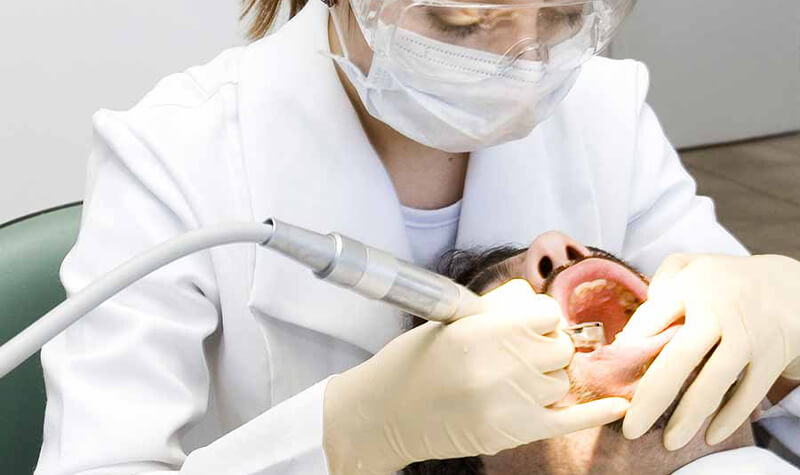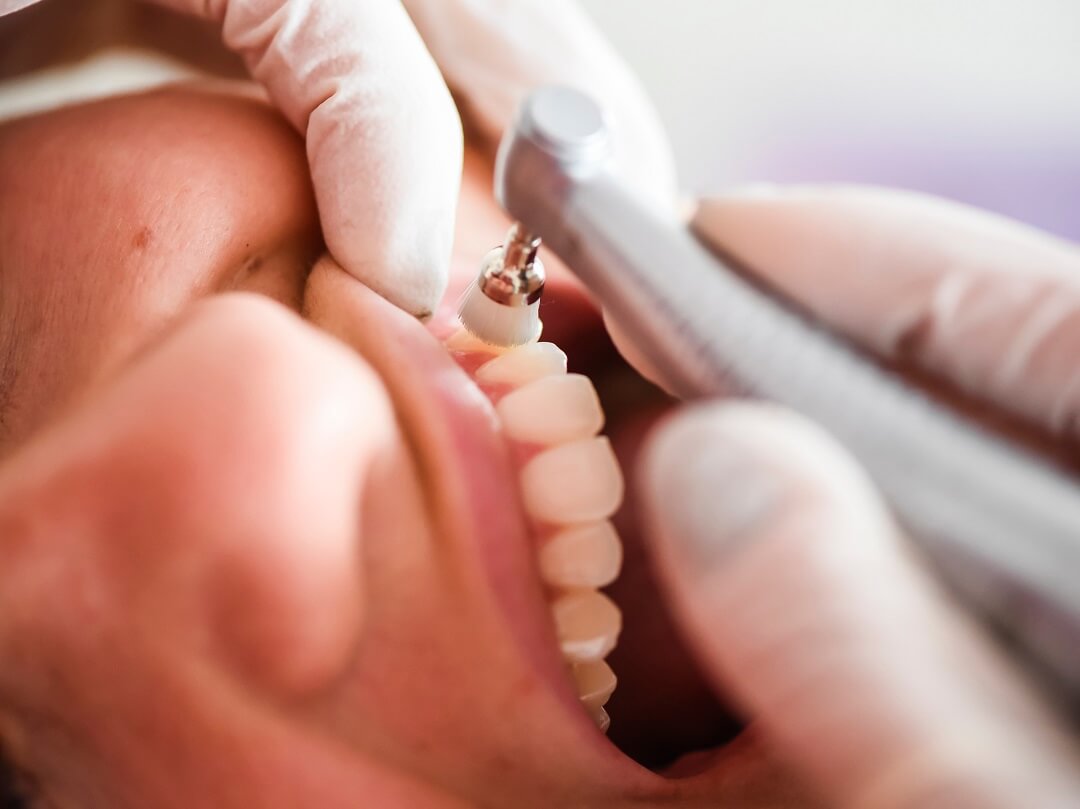If you follow a robust oral hygiene routine, you may wonder if a dental cleaning is necessary every six months. But the truth is, these dental cleaning appointments with your dental team are much more than just cleaning the surface of your teeth. In fact, dental cleanings play a vital role in your overall oral health.
Here we take a closer look at exactly what dental cleanings provide and how they help to ensure you maintain a healthy, beautiful smile.
Key Takeaways
- Regular dental cleanings play a vital role in overall oral health and are necessary to ensure teeth and gums are healthy.
- Dental cleanings remove plaque and tartar, address early signs of dental concerns, and provide a deep cleaning that delivers a polished, beautiful smile.
- Deep cleaning is necessary when signs of gum disease are present and involve scaling and root planing to address build-up below the gum line.
- General dental cleaning should be performed every six months, while the frequency of deep cleaning appointments will depend on the specific dental concerns of the patient.
- Maintaining a good oral hygiene routine between dental cleanings is essential to reducing plaque buildup and maintaining good oral health.
How necessary is a dental cleaning?
Dental cleanings are necessary for your dental team to ensure your teeth and gums are healthy. They play a vital role in an overall quality oral health routine and, while you may feel that your at-home routine is enough to keep your teeth and gums healthy, the fact is, even the best at-home routine isn’t always able to remove all the plaque and tartar that builds up on your teeth and can contribute to tooth decay. But what exactly does a dental cleaning provide?
Provides a dental check-up opportunity
Regular dental cleanings allow your dental team to examine your teeth thoroughly. This provides them the opportunity to identify early signs of gingivitis, or gum disease, as well as early signs of dental decay. By catching these concerns early, they are able to address the conditions before they have the ability to progress to severe dental concerns that require additional treatments, such as fillings, root canals, or even the loss of a tooth.
Addresses plaque and tartar
A major component of dental cleaning is the removal of plaque and tartar. Plaque is the sticky film that develops on your teeth and is full of bacteria that can lead to cavities and gum disease if left untreated. While regular brushing does a good job of removing plaque, it doesn’t always reach everywhere. If plaque is left untreated, it can develop into tartar which greatly contributes to dental decay and gum disease. Dental cleanings allow the hygienist to carefully remove this plaque and tartar buildup.
Reaches spots you cannot
While a toothbrush and floss at home can reach most areas of your teeth and provide a quality cleaning, your dental team has specialized tools that allow them access to areas of your teeth that may be more difficult for you to reach, providing a comprehensive cleaning that removes all the plaque and tartar that can contribute to dental concerns.
Delivers a polished, beautiful smile
In order to remove the plaque and tartar from the surface of your teeth, the hygienist uses a gritty toothpaste and polishing tool that provides a much deeper surface cleaning than you can achieve with your routine at home. This polishing will not only remove plaque and tartar, but it helps to remove surface stains on your teeth and deliver a brighter smile. This is also what delivers that really clean feeling you get after a dental cleaning appointment.

What happens during a dental cleaning?
While we touched on this above, during your dental cleaning, you can expect an overall inspection of your teeth, looking for potential dental concerns that can be addressed before they become a larger problem. After this examination, the hygienist will use specialized tools to remove the plaque and tartar from the surface of your teeth and deliver a fresh, polished appearance to your smile.
Dental cleaning vs. deep cleaning
While you now understand what happens during a routine dental cleaning, what does it mean if your dentist says you need a deep cleaning? How does a deep cleaning differ from a traditional dental cleaning? While a dental cleaning addresses the surface of your teeth and gums, a deep cleaning is often necessary when plaque and tartar have moved below the surface of the gums and signs of gum disease are present.
Are deep cleanings necessary?
When plaque and tartar are not managed through a regular oral hygiene routine, they can build up on the teeth and slowly move below the gum line, letting in bacteria that can lead to inflammation of the gums, tenderness, bad breath, and dental decay. If left untreated, this can lead to tooth loss. Deep cleaning is a more in-depth cleaning procedure that addresses this build-up under the gumline and is only necessary when symptoms of gum disease are present.
How is a deep cleaning done?
While deep cleaning is similar to traditional dental cleaning when it comes to the surface of your teeth, deep cleaning involves two additional procedures. Scaling takes the basic cleaning one step further with specialized tools designed to reach and remove the plaque and tartar that builds up in pockets of the teeth under the gumline. Once scaling is complete, the hygienist moves on to root planing. With a specialized tool, the hygienist smooths the surface of the tooth underneath the gumline, helping to prevent further bacteria growth and adhesion to the tooth while also encouraging the gums to reattach.
How often are teeth cleanings done?
General dental cleaning should be performed every six months and is often scheduled at the same time as a regular dental exam. In some cases, such as when you have hard-to-reach areas of your teeth, your dentist may recommend more frequent cleaning.
How often are deep teeth cleanings done?
How often your dentist recommends deep tooth cleaning will depend on your specific dental concerns. In cases of severe gum disease, you may need several deep cleaning appointments in order to remove all the plaque and tartar underneath your gumline.
What happens if you don’t get your teeth cleaned by the dentist?
If plaque is left on the surface of your teeth and allowed to progress to tartar, only a dental professional can remove it from the surface of your tooth. If left untreated, this tartar can lead to tooth decay, cavities, gum tissue erosion, gum disease, and even tooth loss. Removing this tartar with regular dental cleanings is essential to your overall oral health.
What to do in between dental cleanings?
In between your dental cleanings, it is important to follow a good oral hygiene routine that includes brushing your teeth twice a day and flossing at least once a day. This helps to reduce plaque buildup that can lead to tartar and tooth damage.
Maintaining a clean and healthy smile
While following a good oral hygiene routine keeps your teeth clean on a daily basis, it isn’t enough to remove all the plaque and tartar that can build up on your teeth. Attending routine dental cleanings at least twice a year helps to ensure you have a healthy smile and good oral health. If your oral hygiene routine needs some improvement, a deep dental cleaning can help remove any buildup on the surface and underneath the gums helping restore good oral health and giving you a healthy foundation to start over again with an improved oral hygiene routine.
Helping you achieve the beautiful smile you want
At Soundview Family Dental, our dental team focuses on making sure all our patients achieve quality oral health and a beautiful smile. Dental cleanings play a vital role in your overall health and our team is here to help ensure your dental cleaning is a comfortable experience that helps you achieve your best smile. To learn more about the importance of dental cleanings or how you can improve your oral health routine at home, contact our dental team today.


